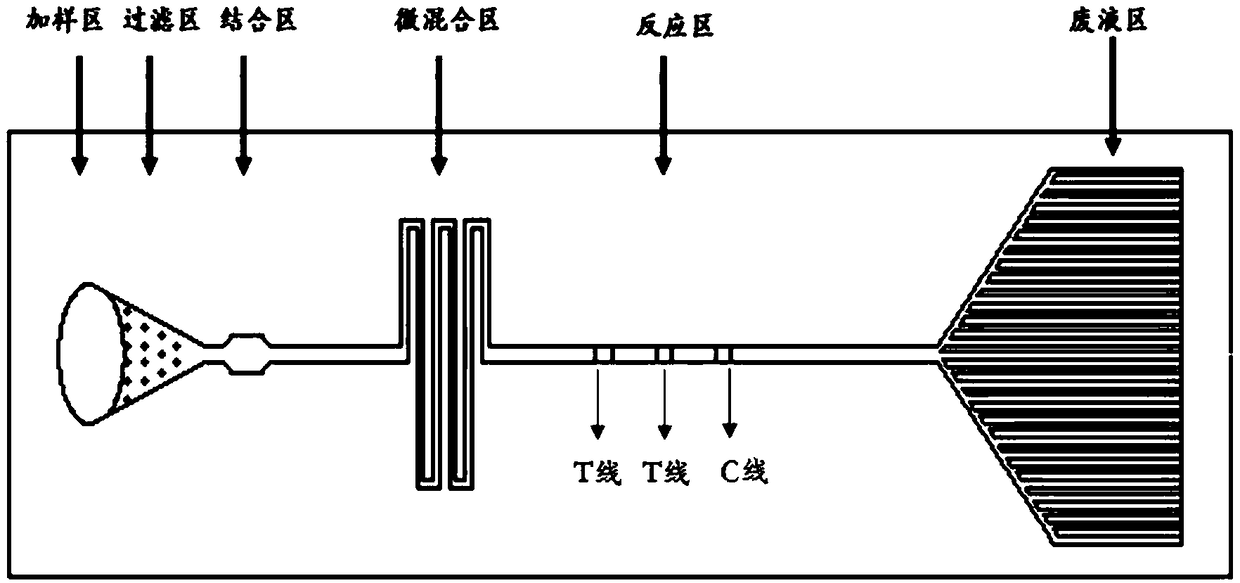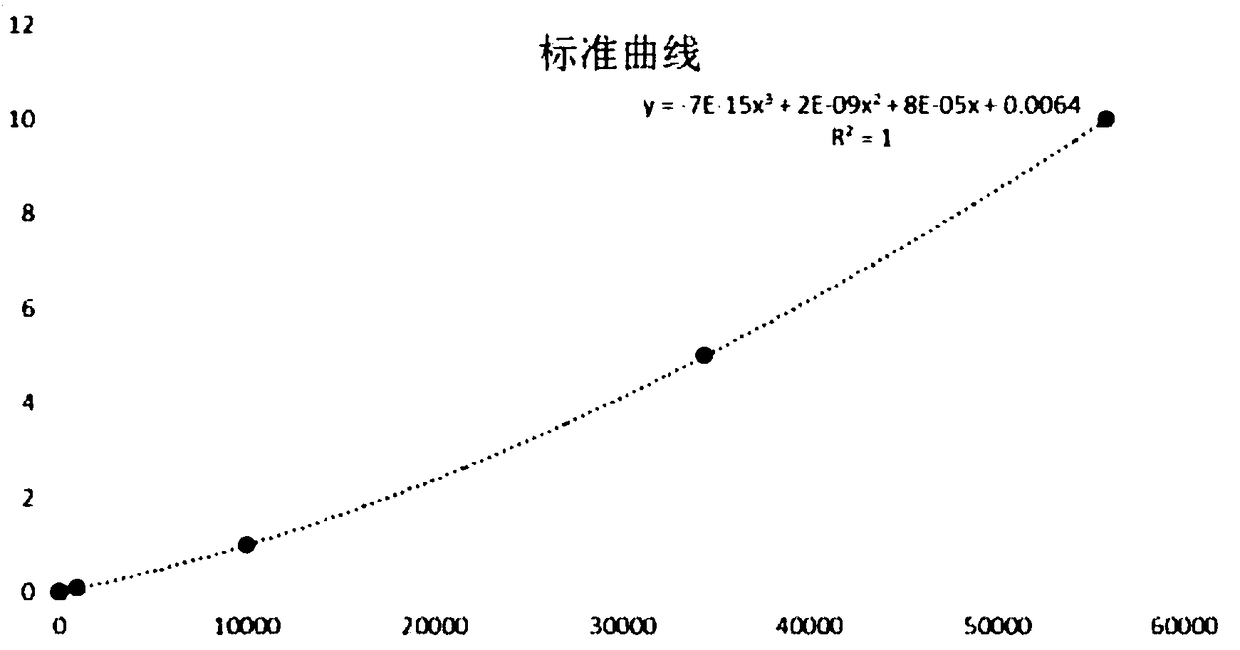Micro-fluidic chip according to time-resolved fluorescent technique, preparation method of micro-fluidic chip and application of micro-fluidic chip
A time-resolved fluorescence, microfluidic chip technology, applied in the field of immunology, to improve efficiency, avoid interference, save sample cost and time cost
- Summary
- Abstract
- Description
- Claims
- Application Information
AI Technical Summary
Problems solved by technology
Method used
Image
Examples
Embodiment 1
[0053] Example 1 Procalcitonin (PCT) microfluidic chip combined with time-resolved fluorescence technology
[0054] A PCT microfluidic chip combined with time-resolved fluorescence technology, the microfluidic chip includes a sample loading area, a filter area, a time-resolved fluorescent microsphere antibody or antibody complex binding area, a micro-mixer, a reaction area and a waste liquid area. like figure 1 shown.
Embodiment 2
[0055] Example 2 Preparation method of PCT microfluidic chip combined with time-resolved fluorescence technology
[0056] 1) Preparation of the microfluidic chip: the microfluidic chip is composed of a hydrophilic substrate and a cover sheet, and the substrate and the cover sheet are uniformly injection-molded and then surface-modified to obtain a microfluidic chip;
[0057] 2) Preparation of time-resolved fluorescent microsphere antibody or antigen complex:
[0058] a. Take 1 mg of rare earth fluorescent microspheres (purchased from bangslabs, item number: ), centrifuge, remove the supernatant, and wash twice with 400ul of coating buffer. Coating buffer formula: Weigh 9.76g MES, dissolve in 1L distilled water, adjust pH=6.0 with 5M NaOH;
[0059] b. Activation: Add 50ul of EDC (concentration: 0.1mg / ML) to the washed microspheres, shake at room temperature for 1 hour;
[0060] c. Labeled antibody: centrifuge the activated latex to remove the supernatant, wash twice with 10mM...
Embodiment 3
[0066] Embodiment 3 Sensitivity detection
[0067] The 1 mg / ml PCT antigen was serially diluted with 10 mM PBS to obtain (10 ng, ml, 5 ng / ml, 1 ng / ml, 0.1 ng / ml, 0.01 ng / ml) gradient calibrator. Draw 30ul gradient calibrator and add it to the microfluidic chip. After reacting for 5 minutes, measure it with a microfluidic fluorescence quantitative analyzer to obtain a set of data corresponding to the fluorescence intensity value and the concentration gradient, and prepare a standard curve: y= -7E-15x 3 +2E-09x 2 +8E-05x+0.0064, see figure 2 .
[0068] Pipette 30ul of 10mM PBS buffer solution, add it to the microfluidic chip, react for 5min, measure the fluorescence intensity value when the concentration is 0, repeat sample addition and measurement 20 times, and obtain the detection result.
[0069] After taking the average value + 2 times SD of 20 groups of detection results into the standard curve for calculation, the obtained concentration value is the analytical sensiti...
PUM
| Property | Measurement | Unit |
|---|---|---|
| width | aaaaa | aaaaa |
| width | aaaaa | aaaaa |
| diameter | aaaaa | aaaaa |
Abstract
Description
Claims
Application Information
 Login to View More
Login to View More - R&D
- Intellectual Property
- Life Sciences
- Materials
- Tech Scout
- Unparalleled Data Quality
- Higher Quality Content
- 60% Fewer Hallucinations
Browse by: Latest US Patents, China's latest patents, Technical Efficacy Thesaurus, Application Domain, Technology Topic, Popular Technical Reports.
© 2025 PatSnap. All rights reserved.Legal|Privacy policy|Modern Slavery Act Transparency Statement|Sitemap|About US| Contact US: help@patsnap.com


